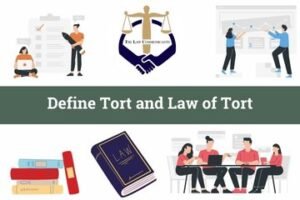Freedom of Assembly vs Public Order: Legal Limits of Protest in India
Written by Prachi Bansal
Introduction:
In any democracy, the right to freedom of assembly and the need to maintain public order are often in tension. This is particularly true in India, where the right to protest is constitutionally guaranteed, but where the state frequently imposes restrictions to preserve public order. This article explores the legal framework governing the right to protest in India, the justifications for imposing limitations, and the ongoing debate about balancing civil liberties and societal stability.
Balancing Freedom of Assembly and Public Order:
Achieving a balance between freedom of assembly and public order is crucial for maintaining a democratic society. While the right to peaceful assembly is essential for expressing grievances and advocating for change, it must be managed to prevent public peace and security disruptions. This delicate equilibrium requires the judicious application of legal frameworks and responsive governance to ensure that civil liberties are respected while protecting the broader interests of societal stability and public safety.
Constitutional Framework:
Article 19(1)(b) : Right to Assemble Peaceably:
The Indian Constitution guarantees citizens the right to assemble peaceably without arms under Article 19(1)(b). This fundamental right allows individuals and groups to gather for lawful purposes, including expressing opinions, holding demonstrations, and participating in peaceful protests.
Article 19(3): Reasonable Restrictions:
However, this right is not absolute. Article 19(3) permits the state to impose “reasonable restrictions” on the right to assemble in the interest of public order, security of the State, friendly relations with foreign states, decency or morality, or to prevent incitement to an offense. These restrictions are crucial for maintaining societal harmony and safeguarding public welfare while balancing individual freedoms.
Legal Framework Governing Protests:
In India, protests are governed by a comprehensive legal framework aimed at maintaining public order and safeguarding constitutional rights. Key statutes include:
• The Indian Penal Code (IPC) : Sections within the IPC, such as Sections 141 to 160, define offenses related to unlawful assembly, rioting, and related acts. These provisions outline legal consequences for actions that disturb public peace or violate public tranquillity.
• The Code of Criminal Procedure (CrPC) : The CrPC provides procedural guidelines for the management of public gatherings and protests. Section 144 of the CrPC empowers authorities to issue orders prohibiting assembly of five or more persons in specified areas if there is an apprehension of danger to public peace.
• The Police Act, 1861 : This colonial-era legislation grants police officers authority to regulate assemblies, processions, and demonstrations to prevent breaches of peace. It outlines powers and duties of police in managing public gatherings and ensuring public safety.
• The National Security Act, 1980 : In cases where protests pose threats to national security, this act empowers the government to detain individuals preventively. It is invoked to address serious threats to public order and national security posed by unlawful assemblies.
These laws form the backbone of India’s legal framework governing protests, ensuring a balance between the right to assembly and the maintenance of public order. They provide authorities with tools to manage demonstrations while upholding constitutional rights and safeguarding public welfare.
Judicial Interpretations:
Landmark judgments have played a significant role in shaping the legal landscape regarding protests in India. Key cases include:
Ramlila Maidan Incident v. Home Secretary, Union of India (2012) : This Supreme Court judgment emphasized the fundamental right to peaceful assembly. It underscored that authorities must use minimal force when dispersing peaceful protesters and highlighted the importance of balancing the right to protest with maintaining public order.
Mazdoor Kisan Shakti Sangathan v. Union of India (2018) : In this case, the Supreme Court reiterated the importance of the right to peaceful assembly. It ruled against blanket bans on protests at designated sites like Jantar Mantar, emphasizing the need to uphold constitutional freedoms while ensuring public safety.
Amit Sahni v. Commissioner of Police & Ors (2020) : This case addressed the occupation of public spaces during protests against the Citizenship Amendment Act (CAA). The Supreme Court ruled that while citizens have the right to protest, such activities should not unduly infringe upon the rights of others or disrupt public life indefinitely.
These judgments reflect the judiciary’s role in interpreting constitutional rights and ensuring a balance between civil liberties and public order in the context of protests. They provide guidelines for authorities and citizens alike, outlining principles to uphold democratic values while addressing challenges posed by public demonstrations.
Justifications for Restrictions:
Restrictions on the right to protest in India are justified on several grounds essential for maintaining societal harmony and public welfare. These include safeguarding public order to prevent disturbances and violence, ensuring the security of the state against threats posed by unlawful assemblies, upholding standards of decency and morality in public conduct, and addressing public health concerns, particularly in contexts such as pandemics where large gatherings may risk spreading contagious diseases. These justifications form the basis for legal and administrative measures aimed at regulating protests while balancing the protection of constitutional rights with broader societal interests.
Balancing Rights and Restrictions:
Achieving a balance between the rights of individuals to protest and the need for restrictions is crucial in democratic societies like India. The principle of proportionality guides this balance, requiring that any restrictions imposed on the right to assemble be proportionate to the threat posed to public order, security, decency, or public health. This principle ensures that restrictions are non-excessive and non-arbitrary, respecting the fundamental rights guaranteed by the Constitution while addressing legitimate concerns for maintaining societal harmony and public safety. It underscores the importance of clear legal frameworks and judicial oversight to uphold civil liberties while safeguarding the broader interests of the community.
Conclusion:
The discussion on freedom of assembly and public order is pivotal for India’s democratic fabric. Peaceful protests serve as a vital avenue for citizens to express dissent and foster societal change, yet they must be carefully balanced with the imperative of maintaining public peace and security. India’s legal framework, anchored in the Constitution and statutes like the Indian Penal Code and Code of Criminal Procedure, delineates guidelines for managing protests while protecting fundamental rights.
Landmark judicial decisions underscore the judiciary’s role in ensuring that protests respect public safety and do not infringe upon the rights of others. Upholding the principle of proportionality ensures that any restrictions placed are fair and necessary, aiming to uphold democratic values. Looking ahead, fostering constructive dialogue and mutual respect between authorities and protesters can help sustain this delicate equilibrium, ensuring that both freedom and societal order are upheld in our democracy.
References
- Constitution of India – https://lddashboard.legislative.gov.in/sites/default/files/COI…pdf
- Indian Penal Code –https://lddashboard.legislative.gov.in/sites/default/files/A1860-45.pdf
- Code of Criminal Procedure https://www.indiacode.nic.in/bitstream/123456789/15272/1/the_code_of_criminal_procedure,_1973.pdf
- The Police Act, 1861 – https://www.mha.gov.in/sites/default/files/police_act_1861.pdf
- The National Security Act, 1980 -https://www.mha.gov.in/sites/default/files/ISdivII_NSAAct1980_20122018.pdf
- Ramlila Maidan Incident Vs. Home Secretary, Union of India (UOI) and Ors, MANU/SC/0131/2012
- Mazdoor Kisan Shakti Sangathan v. Union of India and Anr., MANU/SC/0762/2018
- Amit Sahni vs. Commissioner of Police and Ors, MANU/SC/0742/2020




